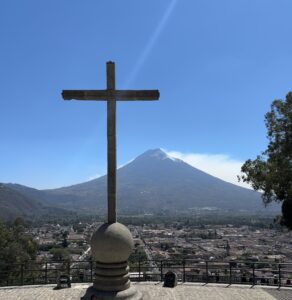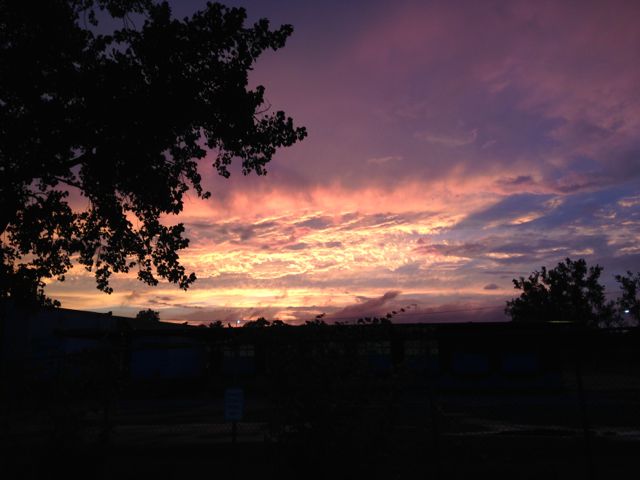
by Mary | Jul 14, 2014 | Uncategorized
How is it possible we have already hit mid-July? I would find that totally unbelievable except for the fact that I’m looking out at my yard as I write this, and it is clearly mid-July out there. It’s like a jungle, with plants run amok and weeds the size of small trees. This is what happens when summer starts to get away from me, and it almost always does. (It just so happens that as I was looking out at my jungle yard, Cari Donaldson posted this wonderful essay about this very thing. Please go read it when you’re done here.) With everything on our calendar for the coming week (including another trip to NYC with my sister and brother and our families), I suspect things aren’t going to get any tidier any time soon.
Before we get on with the rest of Manic Monday, just take a look at that beautiful July sunset over the Stewart’s Shop near our house. Don’t forget to look for God’s beauty in unexpected places — like when you’re at a gas pump a mile from home. Anyway, away we go with the rest of Manic Monday…
(more…)

by Mary | Jul 11, 2014 | spirituality, Travel
In honor of the Feast of St. Benedict, I thought I would re-post my Times Union story on my trip to the Monastery of St. Benedict in Subiaco, Italy, four years ago.
With a breathtaking valley stretching out below and an ancient monastery clinging to the cliffs above, Subiaco, Italy, feels as though it is a world away from the chaotic streets of Rome, only 40 miles to its west. And, in a sense, it is.
Steeped in history that stretches back to the Roman Empire and the earliest centuries of the Roman Catholic Church, Subiaco is a place out of time, giving visitors a chance to step into the very same cloisters, caves and gardens that were once home to ancient saints and medieval monks.
During the hour ride by tour bus, past fields lined with cypress trees and tiny villages dotted with red-tiled roofs, the hustle and bustle of Roman life seemed to fade with each passing mile. Finally, in what can best be described as the white-knuckle portion of the trip, the bus wound its way up a narrow mountain road to what has become a spiritual pilgrimage spot for Christians and a treasure trove of artifacts for history buffs and art lovers.
Although today Subiaco is known as the birthplace of Western monasticism, thanks to St. Benedict of Nursia — who spent three years living in a cave there before starting 13 monasteries — it was first home to the Aequi people, who were defeated by the Romans in 304 B.C. The Roman Empire took advantage of the nearby Anio River and built aqueducts to bring water to Rome, but it was the Emperor Nero
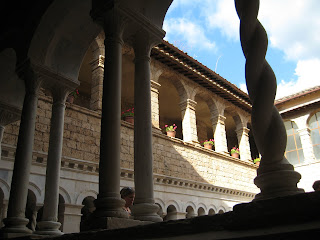 who left his mark on the place. He built a villa there and created three artificial lakes, giving the area its name Subiacus, “below the lakes,” which became Subiaco.
who left his mark on the place. He built a villa there and created three artificial lakes, giving the area its name Subiacus, “below the lakes,” which became Subiaco.
Tour guides like to point out the ruins of Nero’s villa and the irony that the one-time home of this brutal persecutor of Christians would become the fertile ground in which the seeds of the great monastic orders of the Christian faith would be planted. Regardless of why you visit — for the history or the spirituality — Subiaco is a place of mystery and silence, natural beauty and artistic significance.
Monastic life certainly seems to have a pull on modern men and women. You can see it in the increasing interest in the simpler life, the quest for silence amid life’s daily insanity, and, even, on the big screen. No fewer than three recent movies have tried to capture the essence of monasticism: “Into Great Silence,” about the Carthusian monks of the French Alps; “Vision,” about the 12th-century mystic Hildegard of Bingen, and, most recently, “Of Gods and Men,” about a group of Trappist monks who were martyred in Algeria.
Something about the solitude and silence intrigues people today, offering a glimpse of a different, albeit extreme way of life. For visitors to Subiaco, the sparseness, simplicity and spirituality of life as a monk is palpable, as if it’s in the very air you breathe. As you walk from cave to chapel to cloister, you begin to imagine the rigorous life that is easy to romanticize from the outside.
In Subiaco, two monasteries are available for touring: the Monastery of St. Benedict, at the top of the mountain and built over the cave where St. Benedict lived as a hermit, and the Monastery of St. Scholastica, halfway up the mountain and named after St. Benedict’s sister, who was herself a monastic.
Start with St. Benedict’s Monastery, which was built into the cliffs in the 1200s and 1300s, and be sure to take a tour — or use a guide book, at the very least. The twists and turns and layer upon layer of frescoes will be indecipherable to the untrained eye.
The Monastery of St. Benedict contains key places and pieces that you won’t want to miss. Of course, there’s the cave where St. Benedict lived for three years around A.D. 500. You can stand in the small space, known as the sacre speco, “sacred cave” where the saint lived unknown to anyone else save another hermit by the name of Romanus, who would lower scraps of food down to him in a basket.
After three years as a hermit, Benedict became superior of a nearby monastery but was so strict his monks tried to poison him. So he returned to the solitude of Subiaco, started his own community of monks in part of Nero’s old villa, and began writing his “Rule,” the foundation of the Benedictine Order and of many other Christian monastic orders around the world. He stayed in Subiaco for 20 years before moving to Monte Cassino, where he eventually died and was buried with his sister.
For me, one of the most powerful moments at the Monastery of St. Benedict came when I stood before a full-length fresco of St. Francis of Assisi, believed to be the only portrait painted of the saint during his lifetime. He visited the monastery in the 1200s. Another key fresco is a painting of St. Benedict and St. Scholastica during their last visit.
Plan to stay at the monastery for at least a few hours to take in the multitude of frescoes, chapels, churches and grottoes, not to mention the scenic grounds and gift shop. Since no photos are allowed inside the monastery, it’s worth getting a coffee table book or some other pictorial.
Travel down the hill a bit to get to the Monastery of St. Scholastica, where you can enjoy lunch in the restaurant to fortify you for the next round of frescoes and cloisters. I ate a Sunday meal of simple Italian fare cooked to perfection, topped off by local wine, strong espresso and a magnificent view. Once you’ve got your energy back, head off to tour the monastery, which was one of St. Benedict’s original 13 and is still active.
Although it was bombed during World War II, the monastery has been restored to reveal numerous buildings from various periods — the “first” cloister, a Renaissance style, from the 16th century; a cloister from the eighth century; a bell tower, the oldest in central Italy, dating to the 11th century; a Cosmatesque cloister from the 15th century, and a church built in the 18th century. There are frescoes throughout. Photos are allowed inside this monastery.
Over the main entrance to St. Scholastica’s is a sign that bears the motto of the Benedictines: “Ora et labora,” pray and work. And that is what the Benedictines do, based on what St. Benedict established in his Rule. You will find the fruits of their labor in the attached gift shop, which includes everything from handmade soaps and herbal remedies to grappa and limoncello.
More than anything you can buy in the gift shops, however, take home a sliver of that monastic peace and quiet.
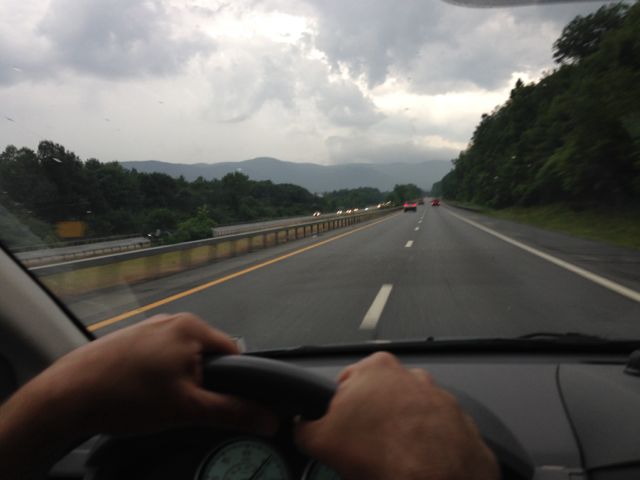
by Mary | Jul 7, 2014 | Everyday Divine
When I returned from my first silent retreat several years ago, I realized that my automatic response upon getting into the car was to turn up the radio. Loud. I wasn’t listening to anything spiritual, mostly the classic rock channel on my satellite radio. The experience of silence on retreat prompted me to give it a try while driving. Instead of singing all the way to and from my daughter’s preschool, I turned off the radio and allowed myself to sink into the quiet of my little makeshift chapel on wheels. (more…)

by Mary | Jul 6, 2014 | family, Olivia
I should have know you would turn out to be a determined, amazing, strong, daring girl…
…when you burst into the world in record time (less than 30 minutes in the hospital) and at a whopping 10 pounds and immediately demanded to be nursed.
You were ready for this world since before you were born. (more…)
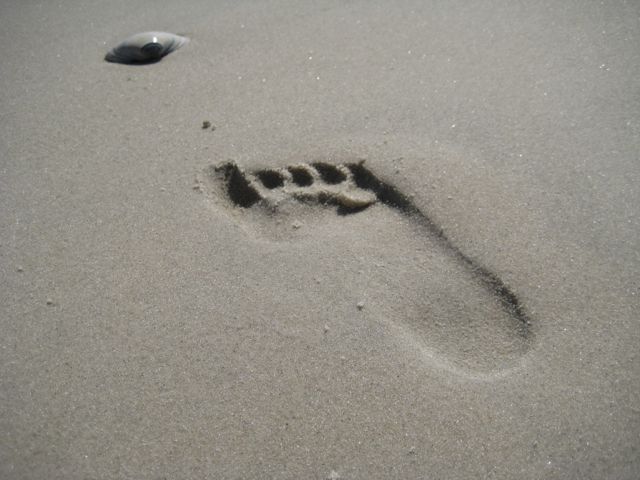
by Mary | Jul 2, 2014 | prayer, spirituality
“And everyone who listens to these words of mine but does not act on them will be like a fool who built his house on sand.” Matthew 7:26
The majestic Adirondack Mountains and the vast Atlantic Ocean are both easily reachable from my home, so this line from the Gospel and the fuller Gospel story (Matthew 7:21-29) elicit some powerful imagery for me. In an instant I am on the beach, where the shoreline constantly changes because of gentle winds or powerful storms. With the crash of even the smallest wave, sand gives way beneath your feet and you can lose your balance.
(more…)






